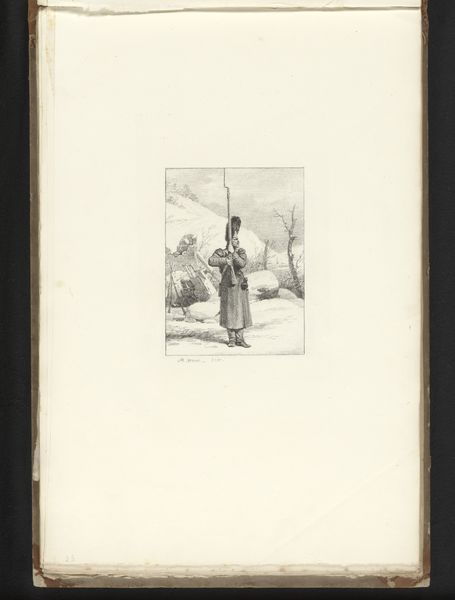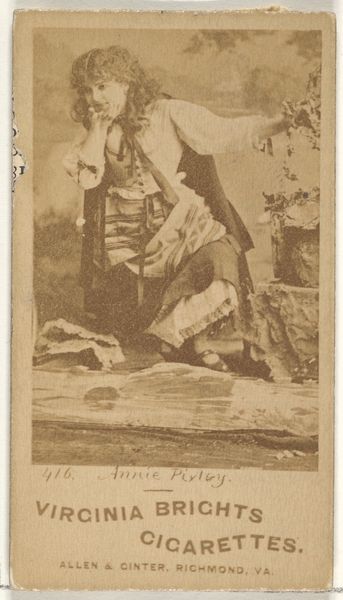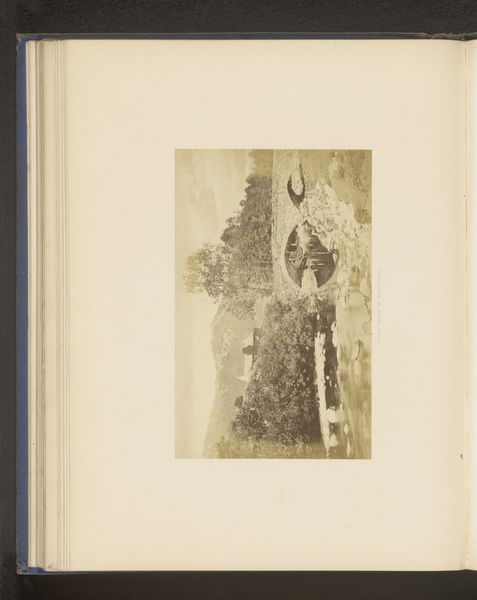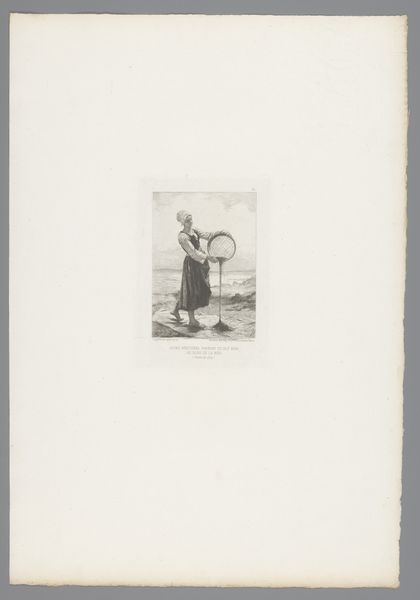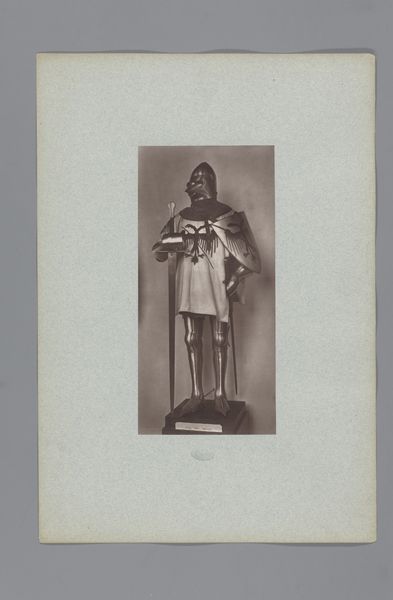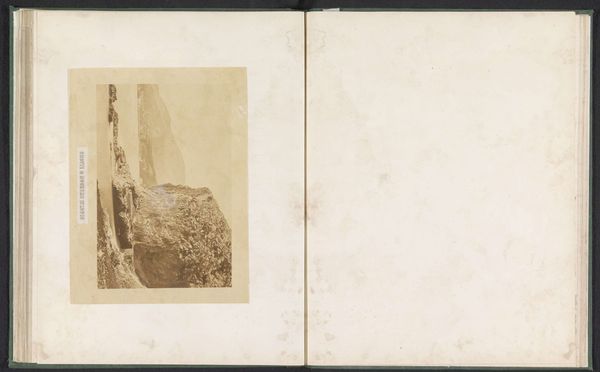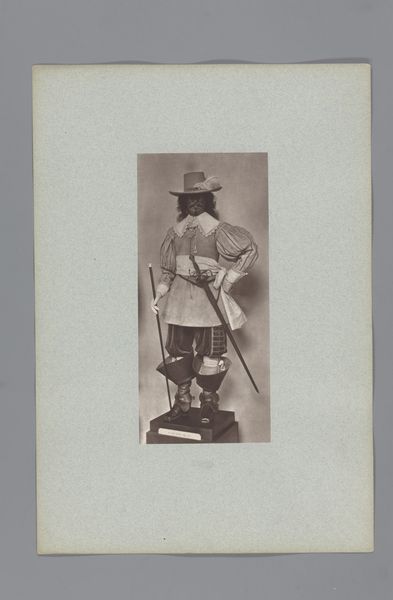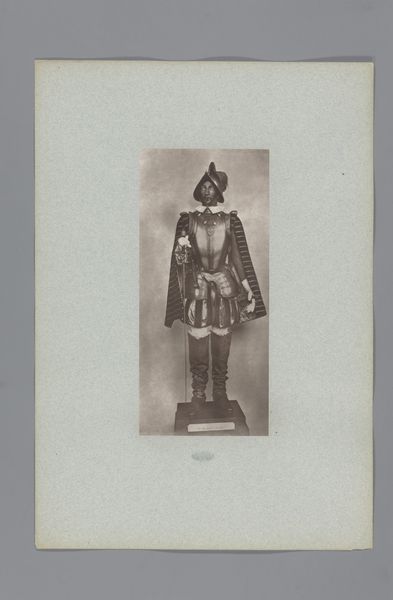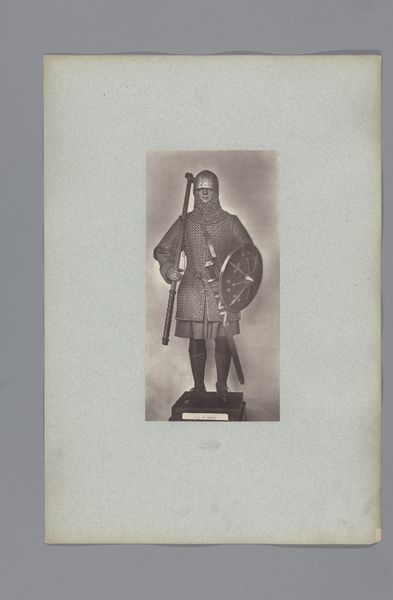
Man met baard voor een troon boven Christus aan het kruis 1813 - 1880
0:00
0:00
print, engraving
#
medieval
# print
#
figuration
#
line
#
history-painting
#
engraving
#
monochrome
Dimensions: height 238 mm, width 320 mm, height 75 mm, width 167 mm
Copyright: Rijks Museum: Open Domain
Curator: Let's discuss this intriguing print, "Man with beard before a throne above Christ on the cross," attributed to Johann Jakob Weber, dating from 1813-1880. Editor: The stark contrast immediately strikes me—a severe figure dominating the space above what appears to be a representation of Christ’s suffering. Curator: As an engraving, the process involves meticulous carving and incising, which contributes to the sharpness of lines and details in a work of this scale. The production would have demanded immense skill. Editor: Absolutely, and I read this monochrome presentation as deliberate, focusing attention on hierarchical power structures—the man seemingly positioned above Christ evokes questions of earthly versus spiritual authority, doesn't it? It compels us to question who holds real dominion and on whose suffering power rests. Curator: It’s intriguing how the artist uses the limitations of the engraving process—essentially just lines—to convey so much about status and emotional weight. Consider how the figure’s garments, posture and confident positioning contrasts so strongly with the agonized face below. Editor: I see a critique of religious institutions. Who gets to interpret sacrifice and for whose gain? The materials almost fade in service of his critical point. I'm also seeing what could be the use of medieval symbols which can lend even more meanings about that era. Curator: That makes sense when contextualizing its manufacture: Printmaking during this time was often aligned with burgeoning mass media, making art and commentary accessible beyond elite circles. The medium itself served to democratize potent iconography. Editor: Agreed. Thinking about labor—both the artist's intricate work and perhaps commenting on Christ’s perceived labor— adds even more nuance. There is a story to be told with clear sociopolitical implications. Curator: Precisely. Examining both the creation and distribution sheds further light. Editor: Well, it gives me chills to realize how relevant questions surrounding institutions, class, faith, labor and hierarchy remain. Curator: Indeed, an incredible print that holds complexity which asks viewers to connect art history to society and beyond.
Comments
No comments
Be the first to comment and join the conversation on the ultimate creative platform.
